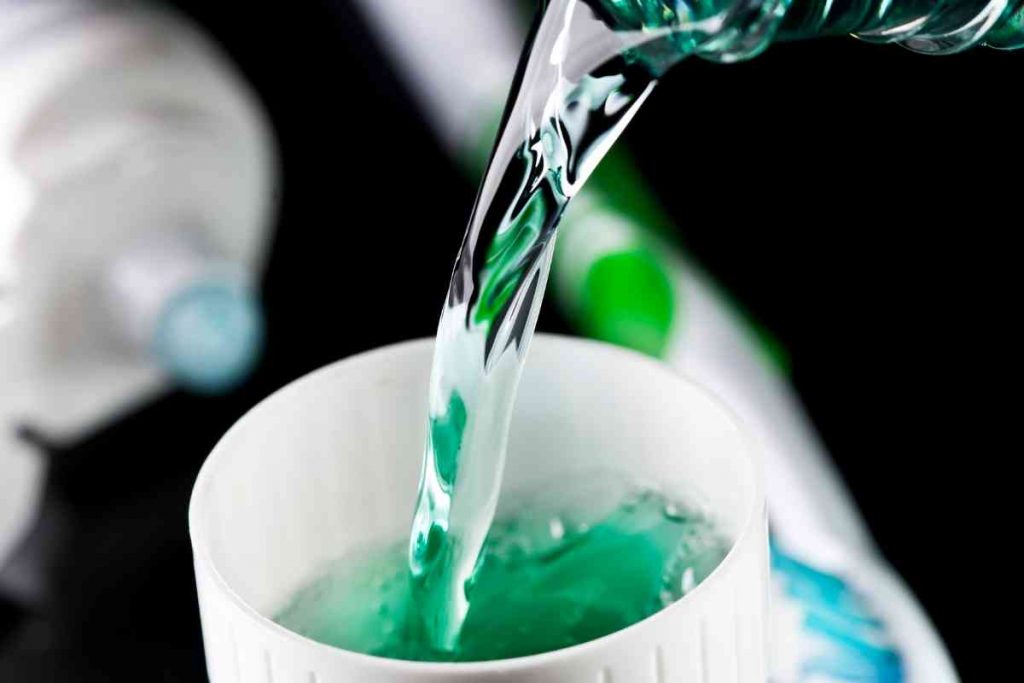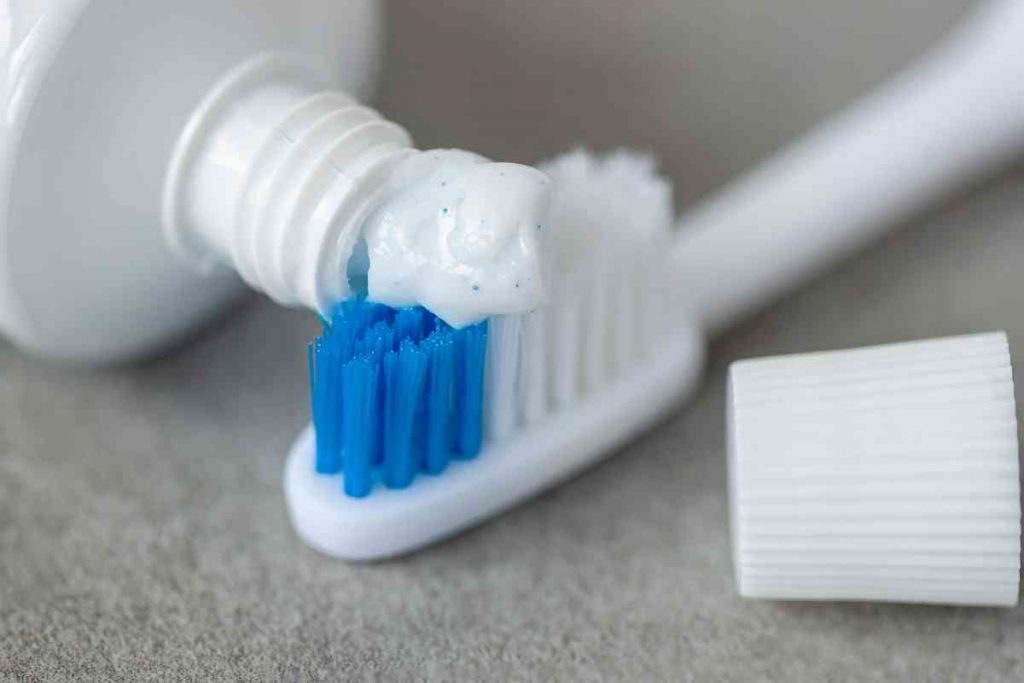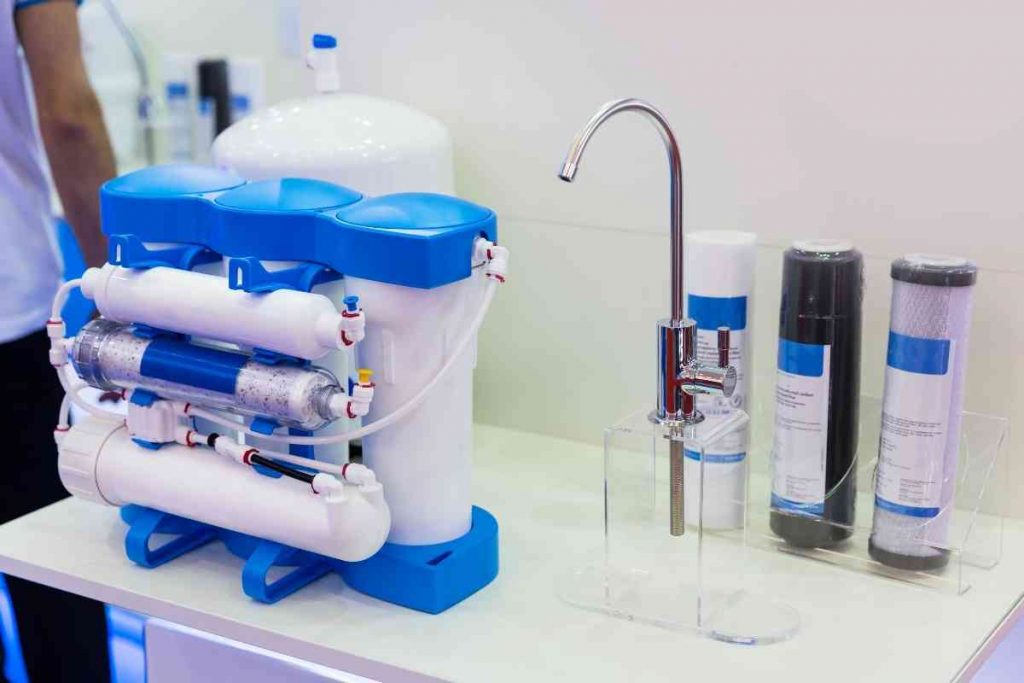You’ve probably heard about fluoride in toothpaste commercials, but did you know that this mineral is also added to public water supplies?
This is a controversial issue, as exposure to high levels of fluoride has been shown to cause health issues in humans and animals. The good news is that you don’t have to drink fluoridated water! Read on to find out how to remove fluoride from water.
In this article you will learn:
- what fluoride is
- why it is added to water
- how much is added to the municipal water supply
- the effects fluoride has on the body
- how to effectively remove fluoride from your drinking water
- how to test your water for fluoride
What Is Fluoride?
Fluoride is a mineral compound that comes from the element fluorine.
Fluoride itself is not harmful to human beings, as it occurs naturally in the environment. This means that this mineral is present in plants, food, the atmosphere, and natural water sources like springs, wells, and rivers.
Some types of fluorides exist naturally, while others are created in labs. The most common naturally occurring type of this mineral is calcium fluoride, which is used to make a wide range of objects, from glass lenses to aluminium sheets.
The main types of fluoride used in public water supplies are sodium fluoride, sodium fluorosilicate, and fluorosilicic acid. These are synthetic and are added to water in powder or liquid form.

Why Is Fluoride Added to Water?
Fluoride was first added to water with the intention of protecting people from getting dental cavities.
The United States was the first country to introduce fluoridation in public water systems.
In the 1930s, American scientists began investigating the relation between tooth decay and fluoride in drinking water. They found that in some communities where the water supply contained more fluoride than usual, there were fewer instances of cavities in children.
Using this new information, a city in the state of Michigan began adding fluoride to its water supply, a trend that many other communities and countries soon followed.
How Much Fluoride Is Added to Water?
From 1962 to 2015, The United States government recommended that 0.7 mg to 1.2 mg per liter of fluoride be added to municipal water supplies.
As of 2015, the recommended amount is 0.7 mg per liter, since, according to the US Centers for Disease Control and Prevention (CDC), modern-day Americans can easily get their hands on products containing fluoride, like toothpaste, for example.
In fact, Americans are now at a higher risk of developing dental fluorosis, a medical condition that causes weakened, damaged teeth and unsightly white patches or brown stains on the surface of teeth. Recommended fluoride levels for public water supplies vary by country.

What Effect Does Fluoride Have on Teeth?
Fluoride binds to the enamel of teeth, which helps to create a tooth surface that is more resistant to acid wear.
According to the World Health Organization, water containing high levels of fluoride (up to 10 mg/L) has been shown to cause fluorosis when consumed. On the other extreme, water containing low fluoride levels has been associated with dental cavities.
Interestingly enough, poor diet and nutrition play a huge part in whether a person develops cavities or not.
Studies also show that countries that fluoridate their water and countries that do not have both seen a reduction in the number of dental caries (cavities) cases over the past few decades.
What Effects Does Fluoride Have on the Body?
In addition to dental fluorosis, another medical condition caused by high levels of fluoride in water is skeletal fluorosis. This condition’s telltale signs are weak, stiff, painful bones and joints, which can happen to both children and adults.
Although high levels of fluoride have been associated with cancer in humans, this has not been shown to come from water supplies with the recommended amounts of fluoride added, but rather from exposure to industrial reactions such as smelting. However, research on this topic is ongoing.
More recent studies have shown that high levels of fluoride in humans can result in other harmful effects. This combined study by scientists at Harvard University and China Medical University shows evidence that high levels of fluoride can impair the development of children’s brains.
Another study by the National Academy of Sciences in the US shows evidence that fluoride affects the thyroid gland.
In light of these recent findings and the steady rise in health consciousness, more and more people are rejecting the idea of water fluoridation and are removing fluoride from their drinking water instead.
How to Remove Fluoride From My Water?
You can remove fluoride from your drinking water by filtering it. Filters take several forms, but the most commonly used ones are listed below.
Types of Filters and Filtration Methods
Distillation Filters
You have most likely heard of distilled water and probably drink it on a daily basis. Bottled water typically undergoes the process of distillation.
In distillation, pure water is produced by evaporation and condensation. Water is boiled in a controlled environment, and the steam produced is allowed to condense into droplets of water. These droplets are then collected as pure, clean water.
Distillers for home use are big, heavy, and noisy compared to other types of filter products, as they work with electricity.

Reverse Osmosis Filters
Reverse osmosis systems work using pressure to force water through a semi-permeable membrane. You may have heard this term in high school science, but if you don’t remember what it means, it is essentially a membrane that lets only water molecules through.
This means that everything, including beneficial minerals such as calcium, is filtered out of the water as well.
RO filter systems are typically installed under the kitchen or bathroom sink.
Gravity-Fed Filters
This filtration method works by using the force of gravity to separate water molecules from unwanted contaminants through layers of filtering materials. Gravity filters do an excellent job of reducing and even eliminating fluoride ions from water.
These types of filters can be large and heavy but small enough to fit on a countertop. They also take a considerably long time to filter water.
Alumina Filters
Also called activated alumina, this method of filtration works by absorbing fluoride. These filters also effectively absorb other heavy metals and impurities.
They are made from aluminium oxide and while they do not completely purify water, they greatly reduce the concentrations of fluoride in tap water. Alumina filters are used in under-sink or whole-house filtration systems.
Bone Char Filters
Bone char is one of the oldest and most effective fluoride filters. In these water filtration systems, tricalcium phosphate is the main compound used.
Bone char, as the name suggests, is actually made from the charred bones of animals. Sounds gross, but before you write off this method, you should know that high-grade bone char is completely safe, tasteless, and odorless.
This method of filtration is also used in under-sink or whole-house systems.
Herbs
Plants such as basil and cilantro have been proven to greatly reduce the amount of fluoride and other contaminants in tap water. The downside to this method is that it takes around eight hours for these herbs to adequately filter water.
Activated Charcoal/Carbon and Hollow Fiber Membrane Filters
You may have seen water filters in the form of straws. These are hollow fiber membrane filters and are aimed at hikers and outdoor enthusiasts.
You may have also seen filter pitchers that use activated charcoal. These are great at producing clean, potable water, but research shows that these two types of filters are not very effective in lowering fluoride content or removing fluoride from water.
Which Type of Water Filter Is Most Effective?
This depends on the design and model of the water filter.
Before you purchase a water filter, it is a good idea to check the performance datasheet of the brand and model of filters you want to buy. This information will give you an idea of how much fluoride the filter can remove.
How to Test the Level of Fluoride in Your Water
You can test the level of fluoride in your water with easy-to-use heavy metal or fluoride test kits. These are designed like pH test strips.
To use a test kit, you simply dip a strip in your water sample, then compare the color of the strip to the color chart that comes with the kit.
Another option is an electronic testing kit called a photometer. This device is more expensive than test strips but will give you a definite measurement.
The other option is to take a sample of water to a local laboratory for testing.
Recap of How to Remove Fluoride From Water
If you’re still unclear about how to remove fluoride from water, here’s the answer: Fluoride can effectively be removed from water by filtration.
The best filtration methods for fluoride removal are:
- Distillation
- Reverse osmosis
- Activated alumina
- Gravity
- Bone Char
- Herbs
These methods are used in countertop, under-sink, and whole-house water filters.
Activated charcoal filters and hollow fiber membrane filters are not very effective at reducing fluoride concentrations. These methods are mainly used in water pitchers and filter straws.

